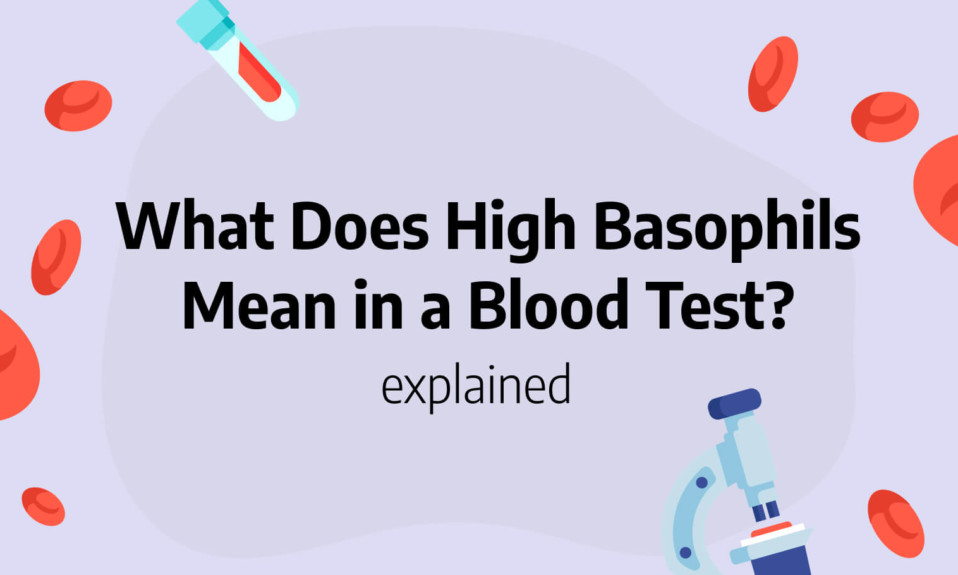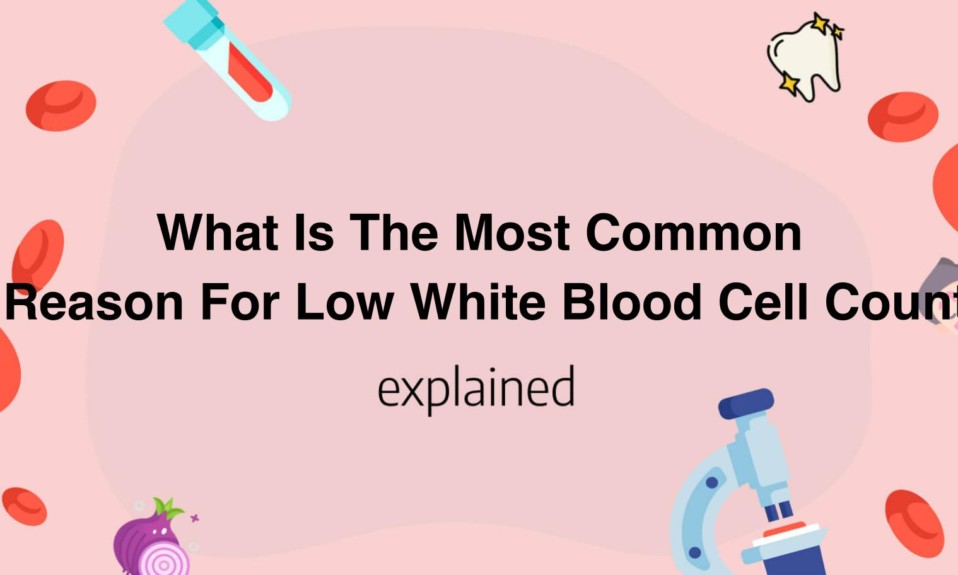In this post, you’ll learn what does high basophils mean.
Basophils are the least common of the granulocytes, representing about 0.01% to 0.3% of circulating leukocytes (white blood cells).
Basophils contain large cytoplasmic granules that obscure the cell nucleus under the microscope.
However, when unstained, the nucleus is visible and usually has 2 lobes.
The mast cell, a cell in the tissue, has many similar characteristics.
For example, both types of cells store histamine, a chemical that is secreted by the cells when they are stimulated in certain ways (histamine causes some of the symptoms of an allergic reaction).
Like all circulating granulocytes, basophils can be recruited from the blood into a tissue when needed.
High basophils meaning
A moderate increase in basophils (2-5%, with or without hyperleukocytosis) is mainly observed during allergic or inflammatory conditions (dermatoses, asthma, immediate hypersensitivity reactions), or hypothyroidism, various endocrine diseases, ulcerative colitis, chronic juvenile arthritis, viral infections (chicken pox), estrogen administration, hyperlipidemia, certain cancers, or Hodgkin’s disease.
A strong (more than 5%) or very strong increase in basophilic cells is more likely to be observed in myeloproliferative syndromes or acute leukemia.
Usually, when the basophils count is higher than normal, we talk about basophilia.
How is high basophils count diagnosed?
Usually, basophilia is diagnosed through a complete blood count (CBC) which is a regular blood test.
What is basophilia?
Basophilia is an increase in certain white blood cells called basophilic cells, which is seen on a complete blood count. The level is greater than 50 neutrophils per mm3, or more than 1%.
Basophilia is usually discovered incidentally during a blood count requested during a workup.
Elevation of this category of white blood cells is uncommon. It is due either to an allergic reaction or to certain rare forms of leukemia.
What is the normal basophils count?
A typical basophil count ranges from 0.5% to 1% of your total white blood cell count.
In healthy humans, this equates to zero to 300 basophils per microliter of blood. Basophil numbers that fall outside of this range may indicate basophilia.
Your basophil count, coupled with other information such as your medical history and symptoms, is used by providers to address the underlying problem causing your basophilia.
High basophils when to worry?
When the basophil count is higher than 5%, it is advisable to talk to your doctor.
In all cases, it is up to the doctor to make a diagnosis based on the other known elements, in relation to an increase or decrease in the basophil count in the blood.
What are the symptoms of high basophils?
High basophils can imply several symptoms depending on how high is your basophil count.
Symptoms of basophilia can include the following:
- Itching
- Fatigue
- Allergic reaction
- Fever
- Bone pain
- And more
Basophils and Autoimmune Diseases
Autoimmune diseases, where the immune system mistakenly attacks the body’s own cells, represent a complex area of medical research.
Emerging studies suggest that basophils could play a significant role in these conditions. These small but mighty cells are part of the body’s first line of defense, responding quickly to invaders.
In the context of autoimmune diseases, basophils may be activated aberrantly, leading to unwanted inflammation and tissue damage.
For example, in conditions such as rheumatoid arthritis and lupus, elevated levels of basophils have been observed, indicating their potential involvement in the disease process.
However, it’s essential to note that our understanding of basophils in autoimmunity is still in its early stages.
Ongoing research is striving to unravel the intricate mechanisms at play and how we can potentially modulate basophil responses for therapeutic benefits.
Therefore, the role of basophils in autoimmune diseases presents an exciting frontier in immunology, promising new insights and breakthroughs in the future.
Treatment Options for Elevated Basophil Counts
Treatment for high basophils (basophilia) typically focuses on addressing the underlying cause rather than the elevated count itself. If allergic reactions are triggering the increase, antihistamines or corticosteroids may be prescribed to reduce inflammation and allergic responses.
For parasitic infections, antiparasitic medications are the standard approach. When basophilia stems from myeloproliferative disorders or leukemia, treatment may involve targeted therapies, chemotherapy, or in some cases, bone marrow transplantation. In cases of chronic inflammation or autoimmune conditions, immunosuppressants or immunomodulators might be recommended. Your healthcare provider will develop a personalized treatment plan based on the specific diagnosis, severity of symptoms, and your overall health status. Regular follow-up blood tests will likely be necessary to monitor basophil levels and evaluate treatment effectiveness.









